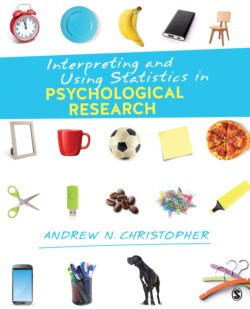Читать книгу Interpreting and Using Statistics in Psychological Research - Andrew N. Christopher - Страница 31
На сайте Литреса книга снята с продажи.
Notes
Оглавление1. If you’ve ever suffered a serious fall in your home, you may well fear this event more than a terrorist attack. However, if you are basing this relative fear on your experience and not on statistical information, you are still making use of the availability heuristic.
2. The expression “A broken clock is correct twice each day” is making use of the law of small numbers. At two times out of the 1,440 possible times (60 minutes × 24 hours) each day, the broken clock will tell the correct time. Of course, the other 1,438 times, the clock is incorrect, but if you looked at it those 2 other times, it would appear to be functioning correctly.
3. This student was indeed from Michigan.
4. If you are interested, Alex continued to keep that same pair of socks and wear them every time he had a test as an undergraduate. Again, he isn’t a dumb person. It is not a lack of intelligence that makes one susceptible to illusory correlations.
5. The difference between an independent variable and a quasi-independent variable is that an independent variable is controlled by the researcher. A quasi-independent variable is not controlled by the researcher. In our example of a quasi-independent variable, the researchers cannot assign people to be first-years, sophomores, juniors, or seniors. These are naturally occurring groups.
